The Harder Right Vs. The Easier Wrong
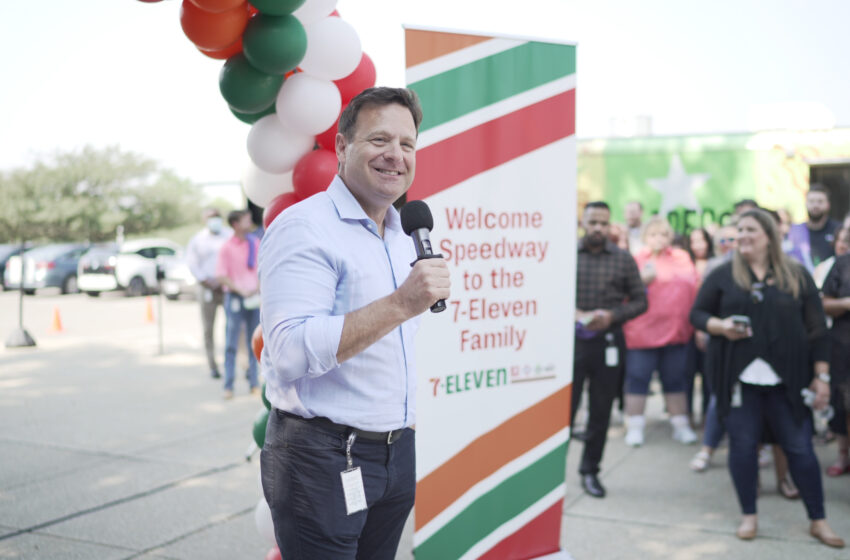
Servant leadership and responsibility top 7-Eleven, Inc. CEO Joe DePinto’s best practices list for the iconic Texas brand.
In 7-Eleven’s 95 years of existence, it has had several firsts. It had the first self-serve soda fountain. It was the first to sell coffee in to-go cups and the first convenience store to sell gas. While 7-Eleven is named for its original store hours of 7 a.m. to 11 p.m., the retailer was also the first to operate 24 hours a day, 7 days a week. It also gave us the Big Gulp and the Slurpee, but perhaps most significantly, 7-Eleven is the world’s first convenience store—and it all began in Texas.
The story, as shared by 7-Eleven, Inc. President and CEO Joseph (Joe) DePinto, goes something like this: “In 1927, Southland Ice Company (now 7-Eleven, Inc.) took a chance on an entrepreneurial employee’s innovative idea: selling milk, bread, and eggs to customers in addition to the ice blocks they sold and delivered. This was in Oak Cliff, Texas, (a neighborhood of Dallas) before there was refrigeration. At the time, customers would have to go all the way to the grocery store for these items. And while other grocery stores were closed on evenings and holidays, this idea from ’Uncle Johnny’ Jefferson Green to provide staple items after hours became an overnight success. Thus, the world’s first convenience store was born.”
Today’s convenience store market is filled with players, established brands and up-and-comers. According to Convenience Store News research, in 2021 after 7-Eleven acquired Speedway, 7-Eleven, Inc. held the number one spot for total store count (7-Eleven, Speedway, and Stripes being the primary brand names). Alimentation Couche-Tard Inc. came in second with its Couche-Tard, Circle K, and Holiday stores. Casey’s General Stores Inc. slid in at third with Casey’s General Store and Bucky’s Convenience Stores, not to be confused with Buc-ee’s, another Texas-born brand that has brought game since its establishment in 1982, expanding across state lines and carving a niche of its own in the market.
But arguably, few have stepped into the world of having their name as synonymous with convenience in the global market as 7-Eleven has. Pop culture is riddled with references to the convenience store, as well, both in locations and product placement. Some of the bigger references have been in movies like The Simpsons Movie and Deadpool and television series like Stranger Things, something DePinto says makes him proud in several ways, but more on that later.
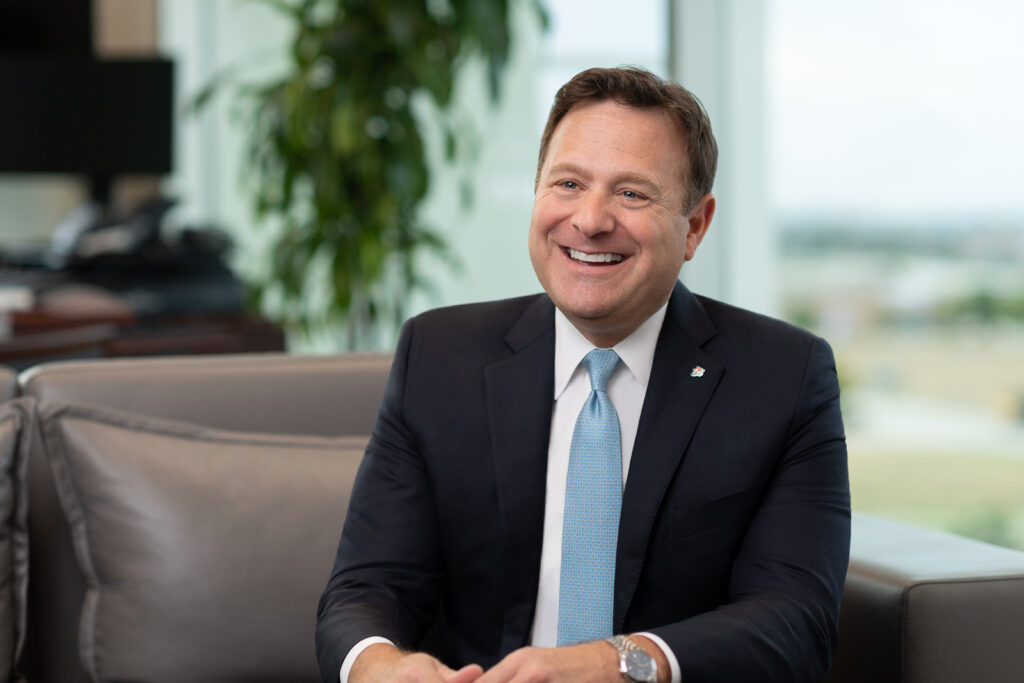
DePinto took the reigns as CEO in December 2005 just after the company became a subsidiary of Tokyo-based Seven & i Holdings. We recently sat down with him to talk about his leadership style, successes, challenges, where the company has been, and where it is headed.
When you were growing up, was there a 7-Eleven in your neighborhood?
There was. There was a 7-Eleven probably a 10-minute walk or five-minute bike ride, which is how most kids got around back then.
Where did you grow up?
I grew up outside of Chicago, in a city called Des Plaines. I was recently back in the area picking up my wife from the airport, and we visited one of our stores. On our way, we drove by a Speedway store in my hometown, and there was all of this media out front. 7-Eleven purchased Speedway about a year ago, so I said, “We’ve got to go in there. What’s going on?” I didn’t know it at the time, but that store had just sold the $1.2 billion Powerball ticket the previous night.
What was it like growing up in Des Plaines?
It was great. It was a midwestern town, with midwestern values. I lived in that city my whole life until I went to college. Growing up, I played a lot of sports, mainly baseball and ice hockey.
You went to West Point, correct? How did that—and your military career following that—how did that affect your leadership style?
What kind of values did you gain from those experiences? I spent four years there. It was pretty foundational for me. I learned about leadership at West Point—it taught me first followership and then leadership—and it helped develop my value system, so it was very formative for me as a young man.
As a leader, you need to understand the environment and the people that you’re engaged with, and tailor your approach to each situation.
How would you define your leadership style?
My style is very much one of service and support. I learned that servant-leadership mentality at West Point. I try to set clear expectations then provide resources and coaching to help others be successful, and then get out of the way.
My approach was really built from what I learned in the military, and many years later, I read a book called The Servant, by Jim Hunter. He also wrote a follow-up book called The World’s Most Powerful Leadership Principle: How to Become a Servant Leader. It’s really all about being customer-focused; having a purpose; being authentic, approachable, a good listener; treating people the right way. That kind of describes what I aspire to be and try to do.
Have you had any mentors or role models?
I’ve been very fortunate in that regard. At West Point and in the Army, it’s really hard not to have a mentor because you have so many officers around you. They were teachers and coaches who mentored me along the way, and I took a lot from them. Being authentic and having humility and empathy was taught all the time.
Growing up, I played a lot of sports, mainly baseball and ice hockey. Some of the things I learned from my best mentors, including my junior hockey coach, really focused on teamwork and what it means to be a productive part of the team.
These mentors instilled the idea of selfless service, always trying to improve and approaching every challenge with a “can-do” attitude and mission orientation. I think the most important thing that I learned, though, was to always do the right thing.
How do you think people would describe your approach to the CEO role that you fulfill now? Would you say it differs in any way from a typical CEO?
I think there are several aspects to my leadership style. I try to be very approachable and accessible. I spend a lot of my time in our stores talking to our operators about what’s working and what needs to be improved. They are closest to our customers and understand best how our customers’ needs are changing.
I’m also a big believer in situational leadership. Do I need to be more hands-on and deeply engaged in a specific situation, or step back and let the team deal with the issue? As a leader, you need to understand the environment and the people that you’re engaged with, and tailor your approach to each situation.
What’s the best leadership advice you ever received?
There is a cadet prayer at West Point, and part of it says, “Make us to choose the harder right instead of the easier wrong.”
Similarly, I once had a brigadier general tell me that true/good leadership is both hard and inconvenient, and that one always stuck with me.
Another piece of advice that I picked up and find myself saying all the time is, “The price of leadership is criticism.” You’re not always going to make everyone happy with the decisions that you make. How people respond is up to them. That’s the price of leadership.
Ultimately, you try to always do the right thing, to do your best. You’ll never go wrong that way.
Is that the advice that you would give to someone aspiring to become a CEO, or do you have other nuggets that you would share with them?
It’s a privilege to be CEO of an organization like 7-Eleven, but it’s also extremely hard work.
I’m a big believer in reading as much as you can and learning from other leaders who are getting it right. I would tell folks who aspire to be a CEO, they should put themselves in that mindset starting now. Understand the role and responsibility and take an enterprise view … shift your perspective. Identify the many stakeholders pushes and pulls. Think beyond the specific function you’re in today. Instead, look at the bigger picture and how you would make decisions for the betterment of the entire organization.
At 7-Eleven, I’m always looking for enterprise thinkers because those are the folks that can impact beyond their function for the betterment of the entire organization.
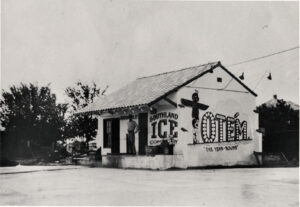
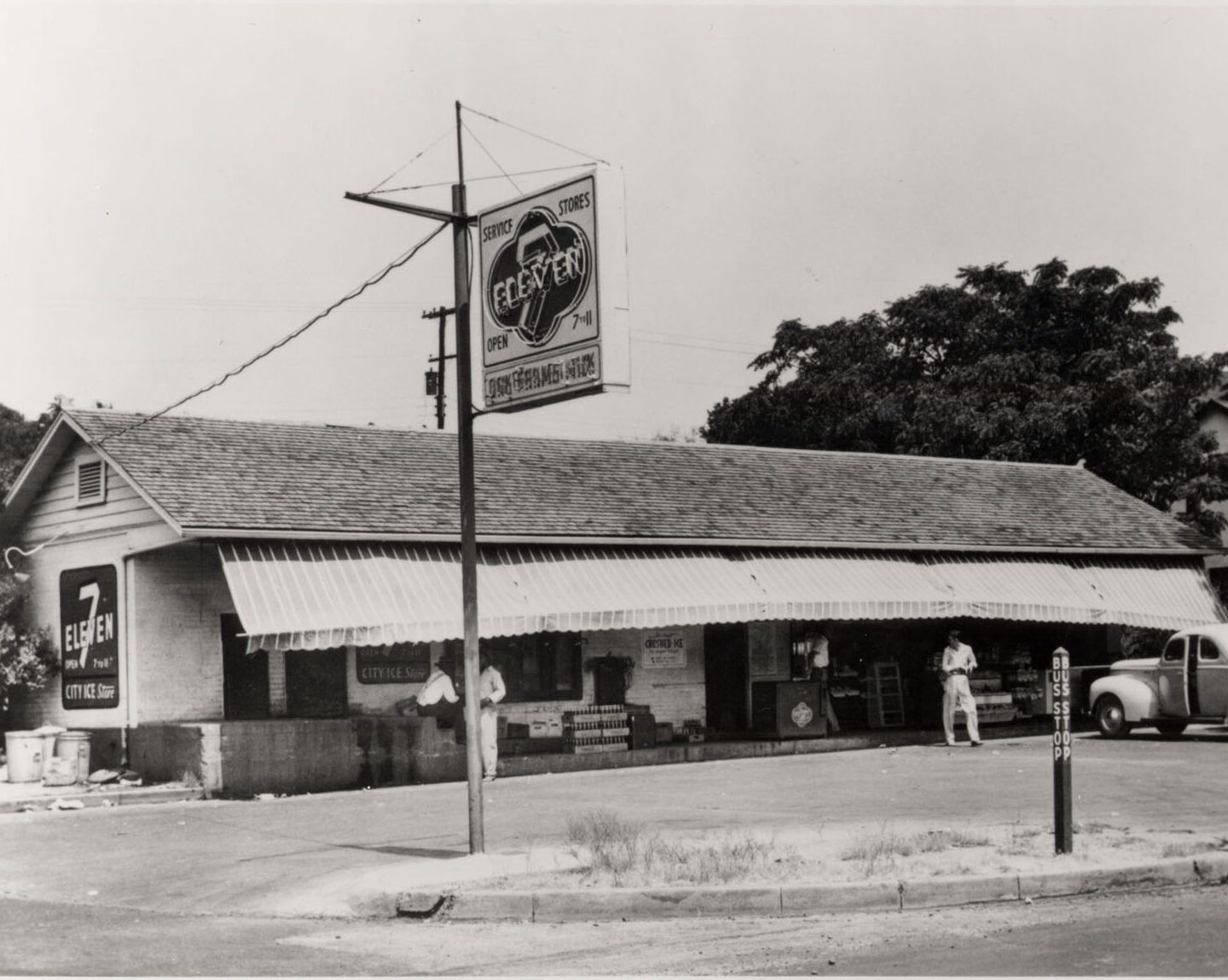
Let’s move into 7-Eleven a bit. What got you into the world of convenience retail? What appealed to you about this industry that made you want to be a part of it?
When I came out of the military, I went to work for PepsiCo in their KFC division. At the time, PepsiCo owned KFC, Pizza Hut, and Taco Bell. They also owned Frito-Lay and Pepsi, so they were a big company. We had an opportunity to hear from the CEO at the time and to decide which division to work in. He said, “If I was someone young, getting into business now, I’d go into the restaurant division because that’s where the growth is going to be.” So, I chose that.
Running multiunit operations was very analogous to the military. Never dull. Always a new opportunity or challenge. I really liked that aspect of it. Later, I was recruited to work for a regional convenience store company that was trying to launch quick-service restaurants in convenience stores.
7-Eleven is more than a store; we’re a neighbor. This was even more evident during the pandemic. Not only are we convenient and accessible, but we’re also welcoming and reliable. We’re there when you need us. We know that our customers depend on us to meet their immediate needs, as well as anticipate what they don’t even know they need yet. We encourage store operators to cater their product assortment to their unique customer-base. For instance, a store next to a school will offer office supplies while a store next to an airport will offer travel essentials.
I would say our other biggest differentiator is our proximity to our customers. More than half of Americans live within two miles of a 7-Eleven or Speedway store. Not only are we nearby, but we are also able to deliver to customers through our 7NOW delivery app much quicker than other c-stores or retailers.
So, you’ve been in neighborhoods and helped fill some voids in terms of what are called “food deserts.” Has that ability always been a part of the mission, and how important is it in your role today?
Food (and fresh food in particular) is a huge part of our business, and hunger relief is one of the cornerstones of our philanthropic strategy. I can think of some places across the country where there is nothing there but us, and since we cater to customers’ needs, we provide them with daily, fresh prepared foods. Since 2000, we’ve proudly partnered with Feeding America and their local network of food banks to address food insecurity at the community level. In partnership with our generous customers, we’ve donated millions of meals to Feeding America.
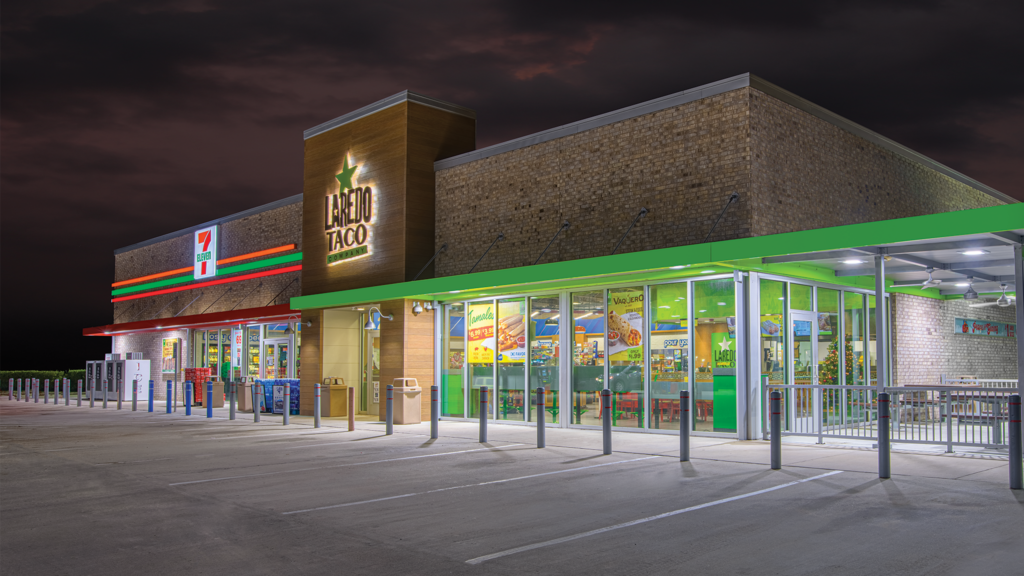
What sets 7-Eleven apart from its competitors in that space?
In addition, we’ve added restaurants into our stores. You may have heard of Laredo Taco Company or Raise the Roost Chicken & Biscuits restaurants. We have about 800 of them now. It’s something that’s really important to us. We’ve been evolving our food and are also providing more healthy options. We’ll continue to do that, but it’s not just our stores. With our 7NOW delivery app, we’re also able to deliver immediate-consumption products to our customers when they can’t get to a store.
In terms of pop culture, how does it make you feel when you see 7-Eleven location and product placement on big and small screens? What does that say about your brand?
Well, obviously I’m proud of our brand. I’m proud of the team and the recent work they are doing here. Our marketing department has done a great job. Our head of marketing, Marissa Jarratt, is phenomenal. When you see 7-Eleven in a TV show or movie, it says we’re integral in people’s lives, we’re part of the fabric of the country. Everyone I meet has a 7-Eleven story, regardless of their age, where they come from, or their unique life experiences. And of course, it also means we’re synonymous with convenience. When people talk about convenience stores, they talk about it in terms of 7-Eleven, even if it’s not a 7-Eleven.
Right. It’s almost generic, or used like that.
It really is. We’ve been serving our customers for 95 years, and we’ve really become a part of the fabric of our society. Like I said, everyone has a story about 7-Eleven and what it means to them. We’ve been in more movies and TV shows than I can name. For us, that’s really cool.
Dedicated men and women doing their job every day, and the culmination of all of that, is what the enterprise truly is.
We heard that you were on the 2010 season of Undercover Boss. What was that like? Do you recall what made you want to participate in that show?
Our head of strategy at the time, came into my office and said CBS approached her. She said, “This is something I think you should do.” Her feeling was: This is an opportunity to tell our story not so much for the people outside the company, but for the people within our organization to see what servant leadership is all about.
And while I admit I was being hesitant at first, it was outstanding! I met some incredible people: Dolores, who handled coffee for us on Long Island, and a gentleman by the name of Igor, who drove for us on the night shift. It was a privilege to experience our brand through their eyes.
What was your biggest takeaway from that experience? You ended up actually gifting an employee with a franchise, right?
We did. That was Igor, who became a franchisee. Sadly, he passed away about eight years ago. But the silver lining is that his son now works for us in our finance department.
What it emphasized for me was something I already knew: how important our people are to everything we do. Dedicated men and women doing their job every day, and the culmination of all of that, is what the enterprise truly is. And taking care of those folks, treating them right, making sure they have opportunity… that’s how we keep the organization growing and enables us to continue to exceed our customers’ expectations.
We’ve touched on it a couple of times, COVID-19. What was the experience of leading 7-Eleven through COVID-19 like? You mentioned pivoting really quickly. Did anything change permanently?
In March 2020, our team had to move quickly. We pulled together a command center that was meeting twice a day for six months. The thing I marveled at most were the folks that worked in our stores. We were designated as an essential business, and our store associates and franchisees came to work every day, not knowing the severity of the virus, but still showing up for their customers anyway. We invested a lot of money—more than $300 million over the past two-and-a-half years—to support them with PPE, masks, shields, cleaning supplies, financial support for franchisees, and more. They did an incredible job.
The labor challenges were huge. The driver shortages totally disrupted the supply chain, which still isn’t back to where it was pre-pandemic. The thing that I feel has permanently changed is the day-part shift at our stores. We used to see our highest volume of customers in the morning, and that’s now shifted more to afternoons and evenings because fewer people are going into offices. We’ll just have to see if that is permanent. I think what the last two to three years have taught us is that we always need to be agile and embrace change.
You’ve been with 7-Eleven since 2002. In the time that you’ve been with the company, what do you consider the company’s biggest achievement?
I’m really proud of our growth and proximity to our customers. In the US alone, we’ve grown from about 5,800 stores to more than 13,200 stores today. Globally, we went from 29,000 to more than 82,000 stores. There’s been a ton of growth, and with that growth has been really strong financial performance. Our team has done an incredible job!
Were there any things that you could point to that paved the way that you did in the leadership level?
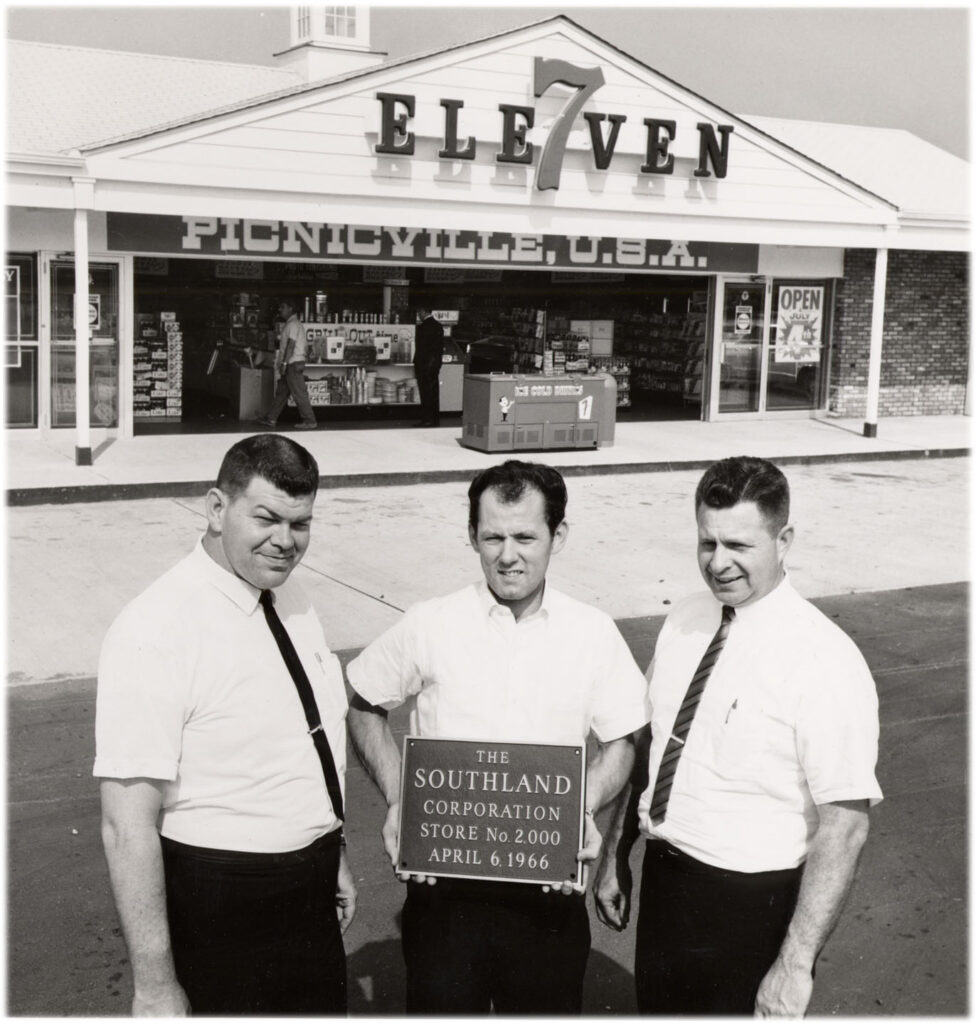
The Southland Corporation went bankrupt in 1990 and when this leadership team took over in 2005, 7-Eleven was carrying a lot of debt. So, our team said, “Look, we’re going to pay down this debt. We’re going to get a clean balance sheet. Let’s spend several years doing that.” And we did. We funneled most of our free cash flow into paying down debt.
We were sitting there at the end of 2008 (when the financial crisis hit) having paid down a ton of debt over several years, with a good-looking balance sheet. This allowed us access to a lot of capital, which helped us accelerate our merger and acquisition activity, thus accelerating our growth and, ultimately, laying the foundation for our future success.
What, if anything, do you consider your biggest missed opportunity or regret?
Early in my time with 7-Eleven, we had an opportunity to move more quickly with some transactions and acquisitions, and we held off. In hindsight, I would say that was something that would have been much more helpful to our company in the long term if we would have done that a little bit sooner.
What keeps you up at night?
Ensuring that the company is anticipating and keeping up with the rapidly changing environment. Things are moving so fast, and COVID has accelerated that. We teach our employees about what we call a VUCA environment—volatility, uncertainty, complexity, and ambiguity. That’s what we live in today, and we’re working to prepare our people and our business to anticipate change so we can continue to meet and exceed the needs of our customers.
In teaching your leadership how to move in a VUCA environment, are there any key concepts that you can share that you do?
The main one is to eliminate silos. People must work together cross-functionally and over-communicate in a volatile and uncertain environment. We work to make sure communication channels are open and communicate as often and as transparently as possible.
The other thing we focus on is alignment. We meet every week for four hours to review our strategic objectives with a real understanding of how the environment is changing and how it’s affecting us: Are we on target? Are we meeting our objectives? Are we short of our objectives? What do we need to improve?
We also hold a bimonthly video call with approximately 2,500 leaders in our company. During this call, we review case studies and best practices allowing us to learn from each other. What was the situation? What was the change that was made? What did we do? Then verifying if the change was effective.
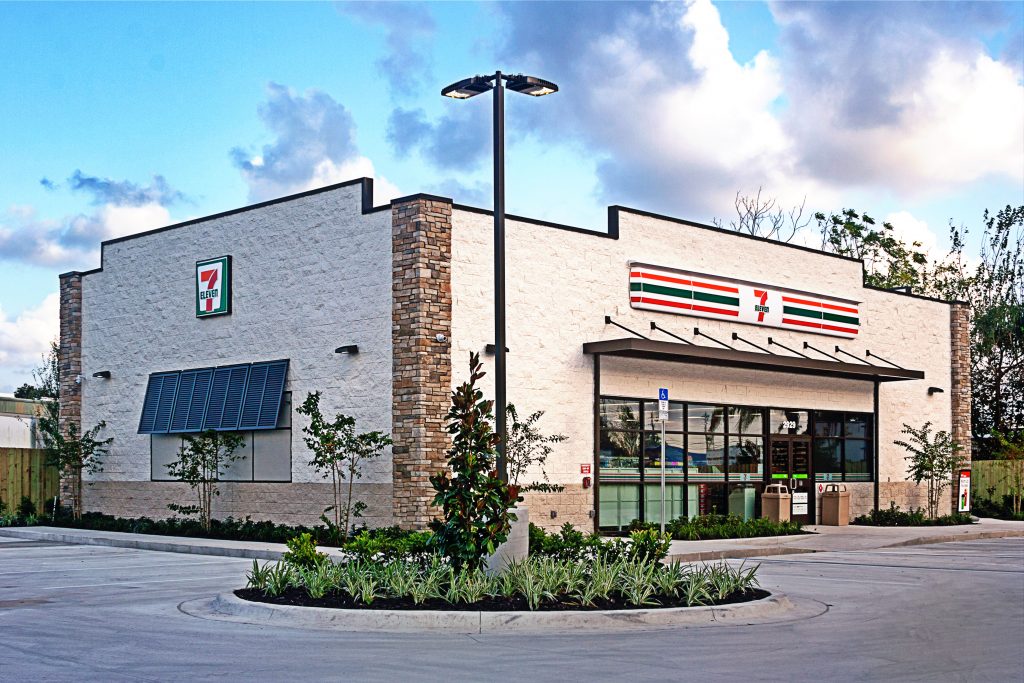
With 82,000 stores globally, what’s in the future for 7-Eleven?
Our focus is always first on the customer. We want to continue to innovate to meet their needs and exceed their expectations. That includes growing our food-and-beverage business. We are also going to expand our global footprint. We’re only in 18 countries and regions right now, unlike some of the other large chain operators out there, which are operating in 100-120 different countries. In the past, we have really focused on concentrating our stores where we go, which has left a lot of opportunity for growth. Of course, with all of that growth, we remain committed to leading the way in sustainability and continuing to be a catalyst for thriving communities.






